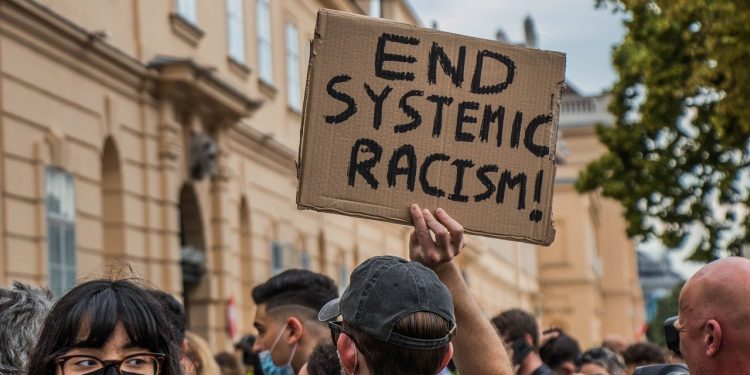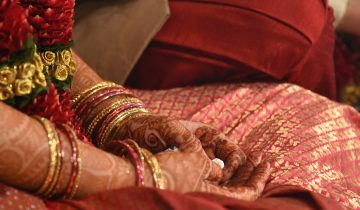The South Asian Community’s Much Needed Involvement in the Black Lives Matter Movement
Read about the importance of the South Asian community's support for the Black community.

Introduction
The prejudice that continues to exist towards the Black community within the South Asian community may not be news, but the need to reform these toxic beliefs and support the Black community is of rising importance today. Only a few weeks have passed since we lost George Floyd, and the overwhelming amount of Instagram posts and urges to sign petitions seem to be fading away. Primarily because a lot of us have the option to detach from the struggles the Black community faces on a daily basis, we speak up when it is “trending” on social media platforms, but too quickly fall silent.
Now, more than ever, we need to refrain from falling silent and living our normal lives just because we are not impacted by the atrocities being committed against the Black community. There are countless ways the South Asian community can fight back, and any participation and support is helpful, but silence is not an option. As a model minority, we have a moral obligation to use our privilege to advance the Black Lives Matter movement and force a change in the harmful system that continues to murder members of the Black community without facing the necessary consequences. Performative activism is especially harmful right now for the Black community when action is going to speak volumes louder than words and black squares on Instagram.
Problem
For members of older generations, to support the movement means coming to terms with the anti-blackness that played a large role throughout their childhood. From discouraging children from dating anyone in the Black community, encouraging face-lightening creams, the stereotype-filled representation of the Black community in Bollywood, and trying to salvage our “reputation” as model minorities by distancing ourselves from the Black community, the South Asian community does little to support the Black community, and moreover plays a role in adding fuel to a flaming fire.
Several Bollywood celebrities such as Priyanka Chopra, Sonam Kapoor, and Disha Patani are being called out for writing about the Black Lives Matter movement while simultaneously supporting fairness creams in the South Asian community and perpetuating the aged ideals of preferring light skin over dark.
Members of the South Asian community are quick to appropriate components of Black culture because their privilege of not being ostracized for doing so allows them to. Lily Singh wears cornrows and is admired for it, whereas courts have deemed it appropriate to discriminate against dreadlocks in the workplace.
Anti-blackness even has its roots in Hinduism, where a well-known deity, Krishna, which translates to black or dark in Sanskrit, evolved to be shown with a blue complexion even though historical texts describe him as having a darker complexion. While there is some speculation about why this change occurred, it is quite evident that it was caused by the discomfort the community had with darker skin.
These are just some of the several ways South Asians perpetuate stereotypes about fair skin and encourage anti-blackness within their communities. For younger generations, supporting the movement has to involve a conversation with family members stuck in this cycle of anti-blackness to understand why the South Asian community needs to play a positive and supporting role for the Black community now more than ever.
Anti-Blackness is deeply rooted in our history, but it’s time to change that and understand how important the civil rights movement was for all minorities. It literally paved the road to allow the Immigration Act of 1965 to be introduced. South Asians, as well as all minority groups, owe the rights we take advantage of today to the Black community and their fight for equal representation. It is high time we shift the narrative from, “So what, we all have faced oppression,” to “The Black community continues to suffer under the current system, while the South Asian community reaps advantages of being a model minority.”
Solution
Addressing the problem within families and communities is the first step, but this movement requires the following, much more important step: actually getting involved. There are countless ways to get involved, stay informed, and help advance the movement as a South Asian.
Resources for Addressing the Problem Within Families:
- Check out this document offering advice about talking to South Asian parents about systemic racism created by Krithika Rao and Manu Kondapi. It is currently circulating the Internet and provides tips for approaching South Asian parents, responding to comments regarding protests, responding to comments regarding racism, as well as additional resources/sources.
- The South Asian Sexual and Mental Health Alliance has done a tremendous job compiling resources for information on anti-blackness in South Asian communities and what to do, moving beyond the black square on social media, and introducing important conversations that need to be had.
Getting Involved:
- Support locally-owned Black businesses. A quick Google search can show you a list of locally-owned Black businesses that need your support.
- Donate to Black-led organizations in your community.
- Donate to South Asian organizations committed to supporting the Black community.
- Help protestors get out of jail through bail funds.
- Donate to Sakshi Sankaran’s fundraising campaign to help African American owned businesses
- Sign the Coalition of Asian American Leaders’ letter of solidarity
- Educate yourself and your family members on the importance of cross-racial solidarity
- Attend upcoming virtual get-togethers to spur the discussions of supporting the Black community.
- For example, Tarina Ahuja, an Indian-American teen in Virginia is hosting a virtual townhall for South Asians of varying generations on June 20th at 2pm EST.
- Additionally, on Father’s Day (11-1pm), South Asians 4 Black Lives will be hosting a workshop discussing defunding the police and having a conversation about the Black Lives Matter movement with brown fathers.
Join Facebook Groups to see how South Asians specifically can get involved and participate in various discussions and the movement:
- South Asians for Black Lives
- Asians for Black Lives
- Asian America for Black Power
- South Asians for Social Justice
- There are also several websites that have compiled resources for signing petitions, donating, supporting local black-owned businesses, attending protests, and organizations to support.
- Good Black News is one of many that has a compiled list of these types of resources.
- Carlisa Johnson has created an extensive document with constant updates on how to get involved in efforts to support the Black community.
Go back, find the hyperlinks within this article, read up, and take action! Please also go beyond resources provided in this article (which is by no means exhaustive) and Hassan Minhaj’s Patriot Act episode (although another useful tool to get informed on how the South Asian community’s lack of support for the Black community is shameful), and find more resources online for getting involved and stay involved.
This is not the time for performative activism online, it is the time to urge all communities to unite and fight together against the system that continues to devalue the lives of our Black citizens.

